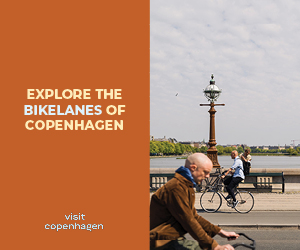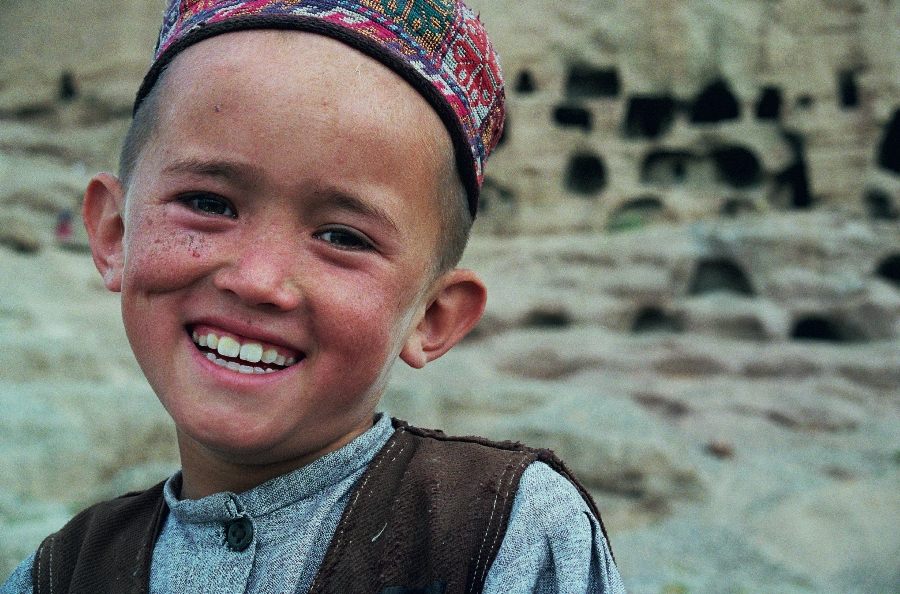The Dadaab Refugee Camps are three small plots of fenced-off earth in Kenya covering an area of approximately 50km2. The compounds hold an estimated 400,000 individuals, largely Somalis, who have fled famine and genocide.
According to Médecins Sans Frontières, the number of refugees in the Dadaab camps is likely to increase to 450,000 by the close of 2011. That adds up to an enormous mass of homeless people in need of food and shelter, who hopefully one day will settle in nations such as Australia and Canada, or the US, the nation that receives the greatest intake of such refugees.
Large governmental and non-governmental organisations from the West have the huge task of ensuring that these people survive by supplying them with food, water, shelter and medicine. As the thousands in the compounds are provided with the necessities, the individual refugee is swallowed up and becomes just one person in a huge body of the displaced. CARE, an NGO describing itself as ‘a leading humanitarian organisation fighting global poverty’, has been employed to manage the Dadaab Refugee Camps. Their role is to oversee food distribution and sanitation. CARE are not alone; a range of other charities offer solutions to a host of problems, including, for example, DadaabNet, a charity that establishes wireless internet in the camps to aid communication and education.
While these organisations vary in size and scope, a number of smaller Western-led groups are attempting to help the individual refugee. As these NGOs focus on the person rather than the hundreds of thousands, their efforts in the camps take a very different form from the more pragmatic processes put in place by the larger NGOs.
The project is currently working in collaboration with the US Department of State, Save the Children, the United Nations High Council for Refugees (UNHCR) and FilmAid International. The aim of the project is to give the individual a chance to tell their story about the experiences that led to internment in the world’s biggest refugee camp. While facilitating the individual in this way may seem an obvious facet to the work of any aid agency, when dealing with almost half a million displaced persons the story of the lone refugee is often lost.
After witnessing the impotence poverty enforces in the nations of Mongolia and Thailand, Littig and Bloodgood are both aware that conversation – a chance to promote awareness – is much needed in places such as the Dadaab Refugee Camps, and that to be given a voice is as essential as food and shelter.
‘Storytelling changes lives,’ states Littig, a sentiment shared by his colleague. ‘Our intention is to provide the space and tools to allow for voices to be heard,’ explains Bloodgood; ‘and to open a conversation with our own communities in the US through creative engagement.’
By telling the individual’s story, the Dadaab Theatre Project was initially hopeful of two overarching outcomes. First, to transform the lives of those in the camps. Second, to change the perceptions of a Western audience who hear tales of people fleeing war-torn nations, or battling drought and disease. ‘To achieve this, we needed to engage with the children in the camp,’ says Littig, ‘while developing a programme to educate future teachers and trainers.’
Littig and Bloodgood were confident that by building both these aspects, awareness would naturally grow, eventually reaching an international audience. ‘We wanted to create conversations,’ says 30-year-old Bloodgood, ‘as these voices weren’t being heard. And they need to be heard, on a global scale.’
Littig conceptualised the programme while living in Mongolia. An actor by profession, the 28-year-old was studying the relationship between shaman and actor as part of a Fulbright Scholar Program grant awarded him in 2008. While living in Ulaanbaatar, he instigated an exchange programme with help from Bloodgood. The two arranged for 12 children from a remote Gobi Desert province in the south of Mongolia to travel to America to share traditional cultural art forms.
At the time, Bloodgood was teaching at the University of Cincinnati’s College Conservatory of Music, in the Department of Drama, and she realised how valuable the opportunity to share Mongolian culture with her students would be. Her students reciprocated with pieces of theatre that examined life in the US. The exchange, Littig and Bloodgood discovered, highlighted ‘the power and possibility of cross-cultural conversations in the arts, realising how important it is to come together as a global community with a common goal in order to share a sense of interconnectedness and humanity’. Following the success of the exchange project, Littig asked himself how he was going to use the experience.
Approaching Bloodgood a second time, Littig hoped to develop a theatre project that would build the stories of those held in the Dadaab camps, that would ignite understanding among people forced to live side by side in cramped conditions. At the same time, the stories would be passed on to a wider audience. After the founders had created an initial outline for the project, Littig travelled to the camp in 2010 to establish partnerships and talk with the refugees.
After experiencing the camps first-hand, Littig and Bloodgood decided the main aims of the project were to be threefold: to listen rather than preach, to educate to the best of their ability and to provide outlets for children and adults to express themselves through theatre. Conversation and education might be taken for granted as modes of rehabilitation for NGOs and others working in refugee camps across the world, yet due to any number of restraints placed on organisations, are often regarded as luxuries. When dealing with large-scale issues, such as malaria and dysentery, educating the individual is often placed lower down on the list of priorities. The Dadaab Theatre Project hoped, in some small way, to alleviate this.
Over a period of six months the project grew, and it now incorporates theatre outlets for children, youth and adults. As Bloodgood proudly notes: ‘The work we did with our core company ranged from sensory and imaginative exercises, poetry analysis, voice and speech and creative writing. We also did script analysis and scene work with the refugees. We worked on musical compositions, making small pieces of original work.’
These creative ways of working were incorporated into a youth theatre group that meets four times a week. On Fridays and Saturdays the project is run in the camp’s child-friendly spaces, in collaboration with Save the Children. The project has also developed a children’s club that encourages leadership through drama, open to young people aged between eight and 18. Children take surveys in the camps to gather information. They have worked on a proposal for the possible installation of libraries. Club members write poetry, play games, tell stories and act them out, and participate in a Dadaab drama competition.
As well as being a listening ear, and providing opportunities to develop the voice of the individual, the project is also intended to help alleviate some of the day-to-day lethargy and hopelessness that exist in the camps. As the founders of the theatre project note, lack of hope is just as problematic as malnutrition and disease, and is something the theatre project means to counterbalance.
‘Our intention is to empower,’ says Bloodgood, ‘to let the refugees say what they want to say and to look them in the eyes and tell them, “We are listening to you, you matter, and others are listening, too.”’ While this is a straightforward statement to make, developing empowerment was not so easy.
To build the trust needed to facilitate change, the Dadaab Theatre Project set out a number of basic principles. The first of these was to ensure that religion would not hinder the process. Littig and Bloodgood knew that any organisation that had a religious drive at its core, while dealing with a variety of African cultures and beliefs, would start to segregate.
‘The elders in the camp welcomed our idea,’ states Littig, ‘because we did not encroach on religion. If we’d stepped over religious boundaries the outcome would have been quite different. We remained, and continue to remain, as neutral as possible.’
The project would also need to last longer than the few months Littig and Bloodgood could dedicate full-time to the project. ‘Sustainability was really important to us, and we are still doing everything we can to ensure that this is the case. Luckily, we think the youth we are working with have enough inspiration and drive to take the steps needed to see that the project continues, even without us being constantly on hand.’
To ensure the life span of the project, Littig and Bloodgood created leaders from among some of the first refugees to participate in the project. This entailed finding those in the camps who were capable of becoming cultural spokespersons. The result is a project run by people who have fled Sudan, Somalia and Ethiopia, a group who have elected a theatre council with its own secretary and chairman.
There are marked distinctions separating small NGOs such as the Great Globe Foundation from the larger organisations such as CARE or the United Nations. Likewise, the founders believe that there are fundamental gaps between what their theatre project is setting out to do and the intentions of those who travel to the camps for brief periods, such as the world’s journalists and representatives of aid agencies.
As Littig notes: ‘Journalists come to the camp for two days and take a few photos, but generally they are there to suit their own agendas. They help, in that they tell the world about a horrific crisis, but it’s an instant solution to a problem that has been transpiring for years.’ In contrast, the theatre project aims to be a long-term solution dedicated to those interned in the camps. To date, as well as the many who attend the theatre courses, the project has nurtured a number of artists such as the poet Ojullu Opiew Ochan. It has also allowed those who have suffered rape and witnessed genocide to regain confidence. ‘There was a young girl who could hardly speak,’ says Littig, ‘but since joining the project she is now having conversations.’
The theatre troupe has also recently performed for the UNHCR World Refugee Day, a proud moment for both founders. ‘For the first time in an age the UNHCR were hearing the actual individual voices and stories behind the masses. For the first time they were seeing Somali, Bantu, Sudanese and Ethiopian men and women function as one whole and united entity.’
The project may have its limitations, yet the NGO’s success is found in its conviction and its ability to be a role model. What the Dadaab Theatre Project highlights is the ease with which people can help those in far-flung and remote refugee camps. While the nature of the project has been a combination of Littig and Bloodgood’s own experience, conviction and careful planning, the founders have proved that it is possible to help people caught in a severe humanitarian crisis.
Littig and Bloodgood have shown that help need not be left to the huge aid organisations: it can also be initiated by small groups of like-minded persons. It does not have to centre solely around substantial tasks like food distribution. In essence, the Dadaab Theatre Project shows that individual can bring help to individual, help that is powered simply by a person’s own creativity and drive.














